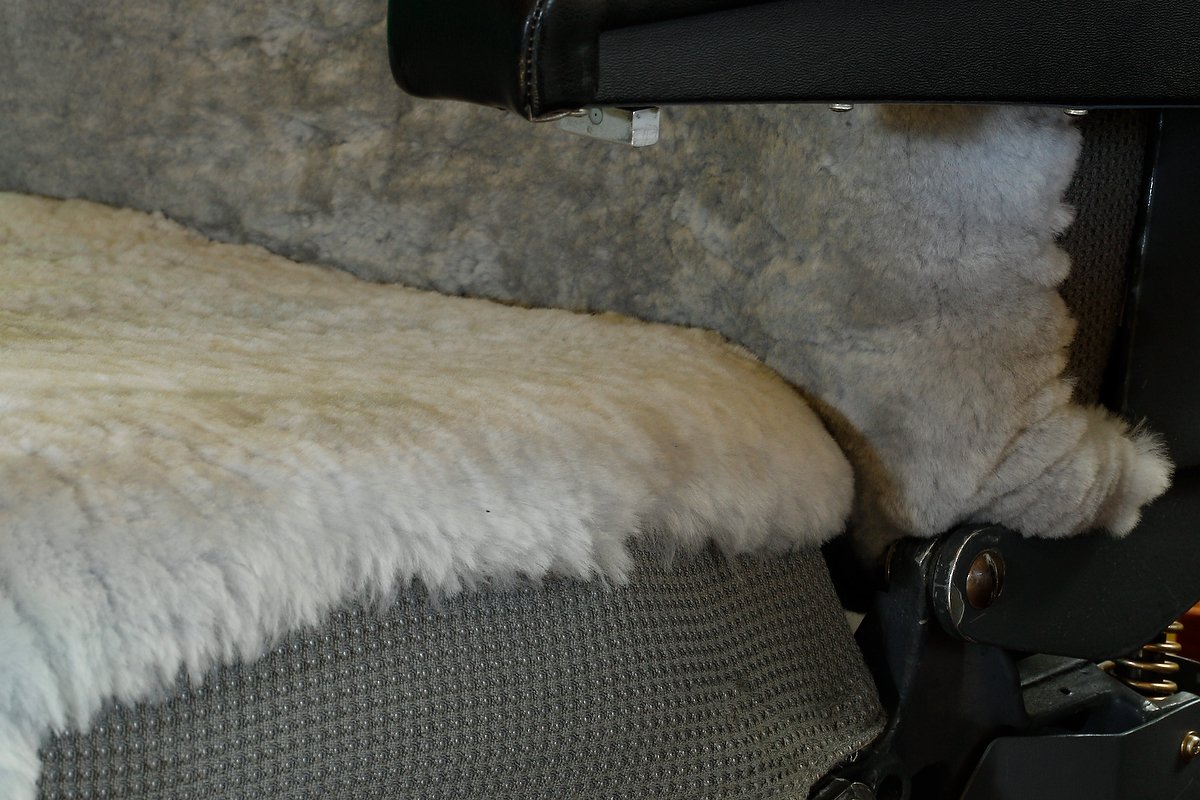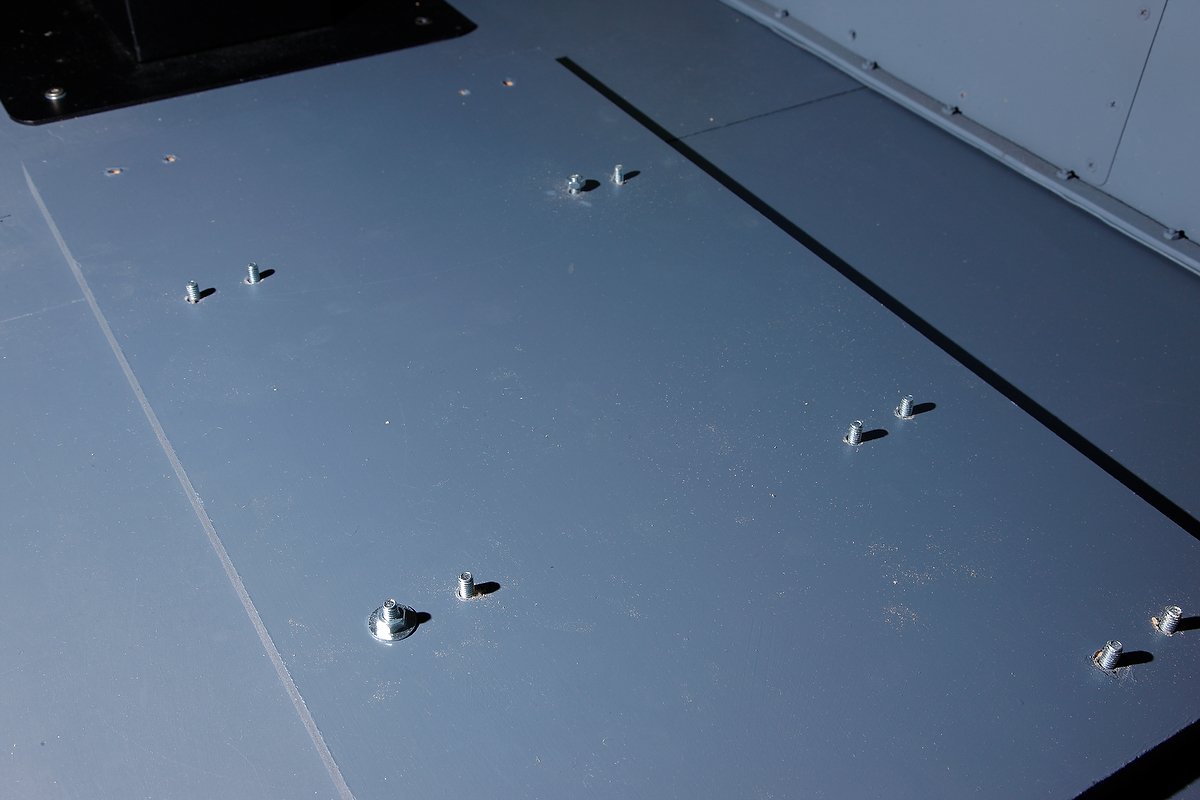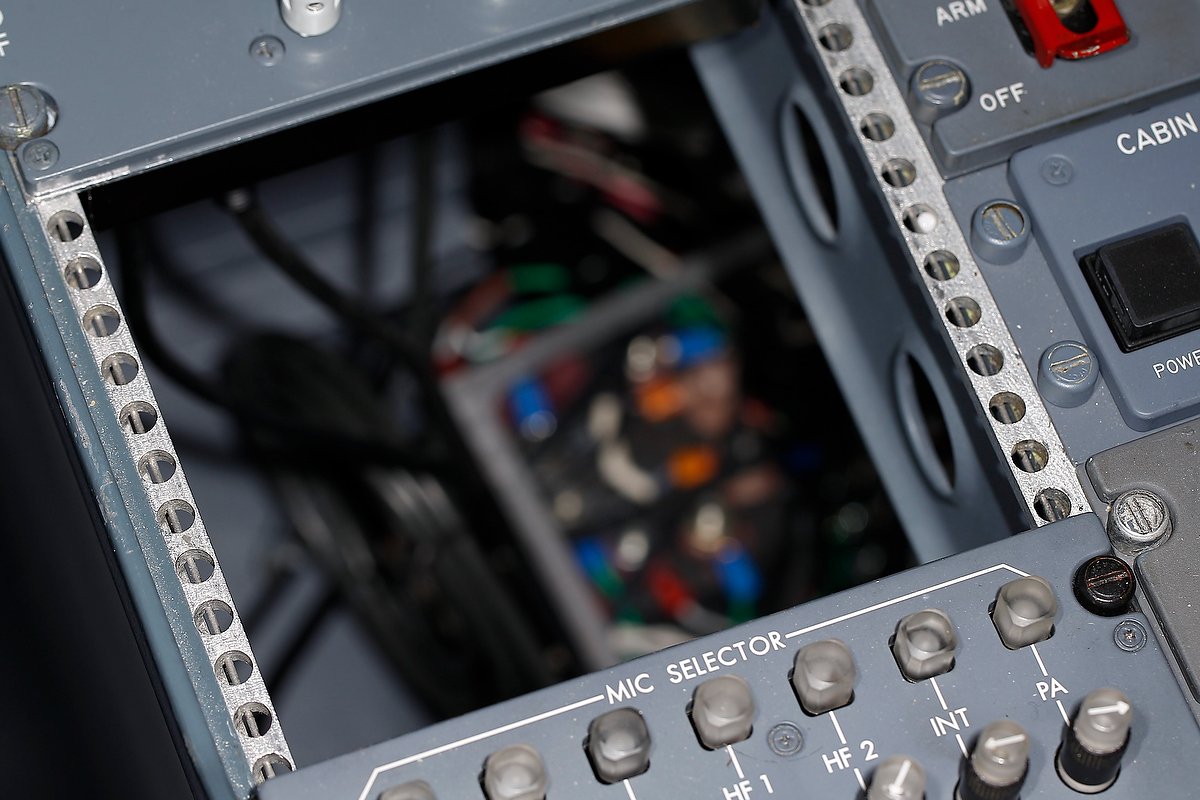I purchased a pro model B737 yoke and column from Ali at ACE Engineering (Aircraft Control Engineering) in Canada to use as a fill-in until I found a pair of real B737 yokes and columns. I wasn’t to realize at the time of my order, that I would discover a quality pair of columns a few weeks later!
I’ve received a few e-mails asking about the yoke and column; therefore, I thought I’d post a quick review.
General Overview & Rating
This is a nice yoke and column that has been designed well and constructed of quality materials. The set up and configuration is very easy and straightforward. The operation of the yoke and column is very good in comparison to less expensive products such as CH Products, and is as good if not better than their nearest competitor which is Precision Flight Controls. The only draw back, other than slow e-mail communication with the supplier, is the poor quality of the bank decal on the elbow, and the lack of a solid and heavy base for those who do not wish to secure the yoke directly to the floor.
My rating: 8/10 (due to lack of a heavy base plate & poor decals)
If I wasn’t going to be using a genuine B737 yokes and columns, then this is the product I would use long term.
Ease of Ordering, Packing and Incomplete Parts
Ordering the yoke was fairly straight forward and payment convenient as Ali accepts Pay Pal. Communication with Ali was very sketchy and often I would have to send two or three e-mails to receive a reply. I have no idea why this is the case, but I believe Ali is a “one man band” so it’s understandable that he cannot do everything and be everywhere at the same time – even with the wonders of wi-fi and i-phone4!
The time from ordering to receipt was around nine weeks.
The yoke and column arrived in Australia is a largish plywood box securely packed in a contoured foam mould; I was impressed with the security and simplicity of packing. The foam mould held the column and yoke securely and no movement was noticeable. Unfortunately, Ali failed to include a USB cable in the box so I had to purchase one separately. Although a small item, I consider that one should have been supplied considering the high price of the yoke. Likewise, Ali failed to include the chart holder and rubberised grommet cover for the yoke. I contacted Ali about these items, but after four weeks have yet to receive them.
Construction
The design and construction of the yoke is above par. There is absolutely no way that the Aces product can be compared with products produced by CH Products or similar. I’d say the construction and quality is on a par with Precision Flight Controls (PFC) but less than an OEM 737 yoke (obviously).
The column and stand are constructed from machine grade aluminium and powder coated in the correct Boeing colours. The yoke is constructed from a solid piece of aluminium, powder coated in black with a glossy plastic finish. The yoke has a very solid feel to it and it’s obvious that this is not a toy. The buttons and switches on the yoke all appear to be of high quality and the electric trim switches replicate the Boeing style switches. On the right hand side of the yoke (Captain’s side) there is rubber grommet that can be easily removed to install a trip indicator.
A problem I noticed is that the base plate is made from very thin anodized aluminum; it is lightweight and has a small surface area. The plate required a secure attachment to stop movement of the unit.
For convenience, I’ve transcribed a copy of dot points from the Aces website below:
Accurate replica of 737 series Yoke.
Full metal and Aluminium casting.
All Aluminium Yoke Handle.
Realistic tension loading.
Realistic Aircraft Feel.
Screen-Printed lettering on Yoke.
B737-NG Clipboard for reading Charts. (Included at no extra charge)
Trim switch based on SAAB model.
Two 737 NG push to talk (mike button).
737 Autopilot Disconnect button.
Button inputs can be assigned within the flight simulation assignments
Mil-spec potentiometers for durability and spike free operation.
Not susceptible to drift requiring re-calibration.
Full Speed USB HID compliant device. Works with USB 2.0 compliant system.
12-Bits resolution (4096 steps)
Hardware calibration support. No calibration in Windows required.
Axis trim and dead zone settings
User adjustable digital filtering algorithm support
Firmware updates via USB
USB bus powered
Set Up
Set up is exceptionally easy. I’m using a computer running Windows 7 64 bit and the yoke was immediately recognised by the computer software. Opening the settings tab in FSX you can see the Ace's yoke software interface. To configure the yoke, it’s only a matter of assigning button presses and calibrating axis movements. This can either be done within the Ace joystick controller/button assignment software or via FSUIPC. Everything was very straightforward and remarkably easy.
Functionality and Operational Use
What can I say – the yoke works as it’s designed.
If you are used to a desktop push and pull yoke then the movement of the column will feel odd for a short time. The ability for the yoke to center detente is controlled by springs, while the dead zone is controlled by software configuration. Now and again you can hear the springs move as they replicate the pressure of a simulated real yoke, but this is completely normal when using heavy springs to control back pressure.
The pressure generated by the springs is nowhere near that of a real 737 aircraft, but for many this is not an issue. The yoke and column move very smoothly in the forward and aft movement; there is no jerkiness that is associated with other yokes and columns. However, in roll mode the yoke is not as smooth as I would have thought; slight jerkiness is experienced in the first 5 degrees of roll.
The yoke’s angle of incline matches fairly closely the degrees of bank measurement as indicated on the decal. If this isn’t satisfactory, then detailed calibration can be completed in the FSX setup area and/or via FSUIPC (strongly recommended).
I have only used the product for a few hours, so I cannot comment on the longevity of the product. Ace have used military specification potentiometers for durability and spike free operation, so I assume durability is medium to long term.
Problems
There is very little to complain about, however, if pressed, there are three things:
The decal which indicates the angle of bank (on the upper section of the column elbow) is of low quality. Within a few hours the decal had begun to peel away at the edges. You can note the decal separating from the elbow in the first photograph. I believe a silk screened decal, similar to that used on the OEM yoke, would have been a better and more permanent option. The other yoke decals are satisfactory.
Second, the stand which supports the column and yoke is very light weight. If you place your yoke and column on a carpeted floor and attempt to use it, you will find it will slide very easily. The plate needs to be attached securely to a platform base, floor or other structure to stop this movement. There are four holes fabricated into the base plate to allow for this attachment.
Third, as discussed above, the yoke when tuned left or right (roll mode) is not as smooth as I would have expected and feels a little jerky. This is more evident in the first 5 degrees of roll. I have checked with other users and they claim this also occurs with their yoke.
737 Trip Indicator
The trip indicator is a three digit, back-lit dial that can be fitted to the Ace yoke - it is an OEM item. The Ace yoke has a rubber seal covering the hole where the indicator resides.
The hole is slightly too small to accommodate the OEM trip indicator and will need to be enlarged a few millimeters to enable the indicator to be pushed into the hole. The actual depth of the indicator is not cause for concern as it sits flush to the front edge of the yoke. To read about Trip Indicators.
Affiliation
I have no affiliation with this product or any other product I discuss on this website.
Update
on 2012-10-27 10:41 by FLAPS 2 APPROACH
Chart Holder - Finally Arrived
Completing my order with Ali was a nightmare. Although he eventually responded to my several dozen e-mails, the promised chart holder did not arrive. Eventually, almost one year to the day that I received the yoke, the chart holder arrived. Oddly it was sent to me by one of Ali’s customers in Australia (who had purchased a yoke).
Although conjecture, I believe Ali did not want to pay the shipping cost to send the missing chart holder to me, which is why he piggy-backed the item on a yoke shipment to another person in Australia. To Ali's credit, he did reimburse the internal postage that I paid to have the other person send the chart holder to me.
The quality of the chart holder is very good and I have no problems with the holder, although I do not have a OEM chart holder to make a direct comparison.
Update
on 2013-04-08 01:42 by FLAPS 2 APPROACH
The Ace Engineering yoke has been sold. I am now using an OEM 737 yoke and column.
There is absolutely no comparison between a reproduction part, no matter how good it is, and the OEM counterpart. The genuine item has been made to exacting requirements, has been built to withstand frequent abuse, and is designed to provide longevity.
Aesthetically, both the ACE and OEM yoke look similar, however the feel is completely different. The electric trim switches on the genuine yoke feel more solid and robust and less toy like. The buttons also feel more robust with a more hefty push required to activate them.
Functionally, the OEM yoke has a much silkier and smooth feeling when rotating the yoke. There is absolutely no binding that is readily apparent when using the ACE yoke (when turning the yoke approximately 5 degrees bank).
The ACE column does not attempt to replicate the OEM control column. The genuine columns have a bulbous lower section that must be fitted into the fligh deck floor and then linked to the column on the First Officer side. The ACE column terminates in a flat plate that is screwed to the floor.
This said, the ACE yoke is probably one of two yokes and columns that are currently on the market that come close to a genuine yoke; the other is produced by Precision Flight Controls in California.
Navigate to 737 yokes and columns to read more about the OEM control columns.































































































